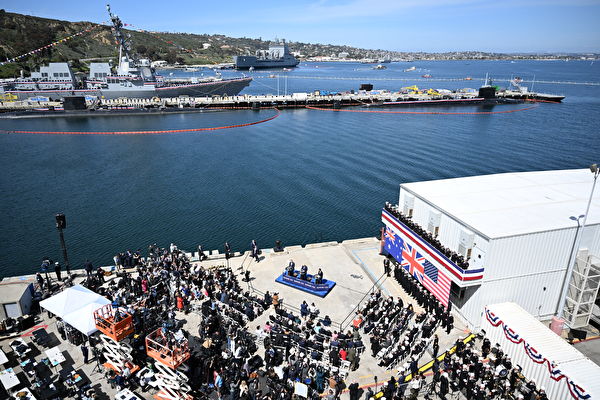The British Navy announced on Friday, October 4th, that as part of a series of military experiments, the navies of the United Kingdom, Australia, and the United States successfully operated an unmanned vessel located more than 10,000 miles away in Australian waters controlled from Portugal.
According to Reuters, the British Navy stated that AUKUS is helping bring new military technology to the front lines at an “unprecedented” speed.
The AUKUS security agreement between Australia, the UK, and the US was established in September 2021, aimed at countering the increasing influence of China in the Indo-Pacific region.
James Parkin, Director of Development at the British Navy, said in a statement that the success of the experiment demonstrates the ability of the three AUKUS countries to command and control ships on the other side of the globe in a tactically realistic scenario. This indicates progress towards fulfilling the ambition of creating a team that combines manned and unmanned systems, capable of conducting operations and achieving victory anywhere on Earth, from the sea to space.
The experiments, known as “Maritime Big Play,” also tested other unmanned driving equipment in simulated combat scenarios, including deploying payloads from drones, with the ultimate goal of rapidly deploying unmanned driving technology to the front lines.
The British Navy stated that AUKUS countries plan to conduct more experiments later this year, including a large-scale demonstration involving around 30 systems in the Indo-Pacific region.
Voice of America reported that there are dozens of unmanned surface vessels under development or already in service worldwide. However, the ability to operate unmanned surface vessels from tens of thousands of miles away as demonstrated by the AUKUS navies in this experiment is not commonly seen.
Throughout this year, AUKUS countries have been deepening their cooperation, including announcing reforms in August to eliminate major defense trade barriers, paving the way for faster approval of highly sensitive technology exports by the United States. This move was seen as a significant step for Australia to acquire American nuclear-powered attack submarines within the next twenty years and collaborate with the US and UK in developing new conventional-armed nuclear-powered submarines.
AUKUS has two pillars: providing Australia with conventional-armed nuclear-powered submarine fleets and collaborating on advanced capabilities such as quantum technology, advanced network capabilities, hypersonic and counter-hypersonic capabilities, electronic warfare, and underwater capabilities.
The defense ministers of the US, UK, and Australia stated that through the activities of the two pillars of AUKUS, all three countries are committed to working together with the region to ensure “a stable, peaceful, and prosperous Indo-Pacific region, complementing existing regional frameworks.”
China has labeled the AUKUS treaty as dangerous and warned that it could trigger a regional arms race.

